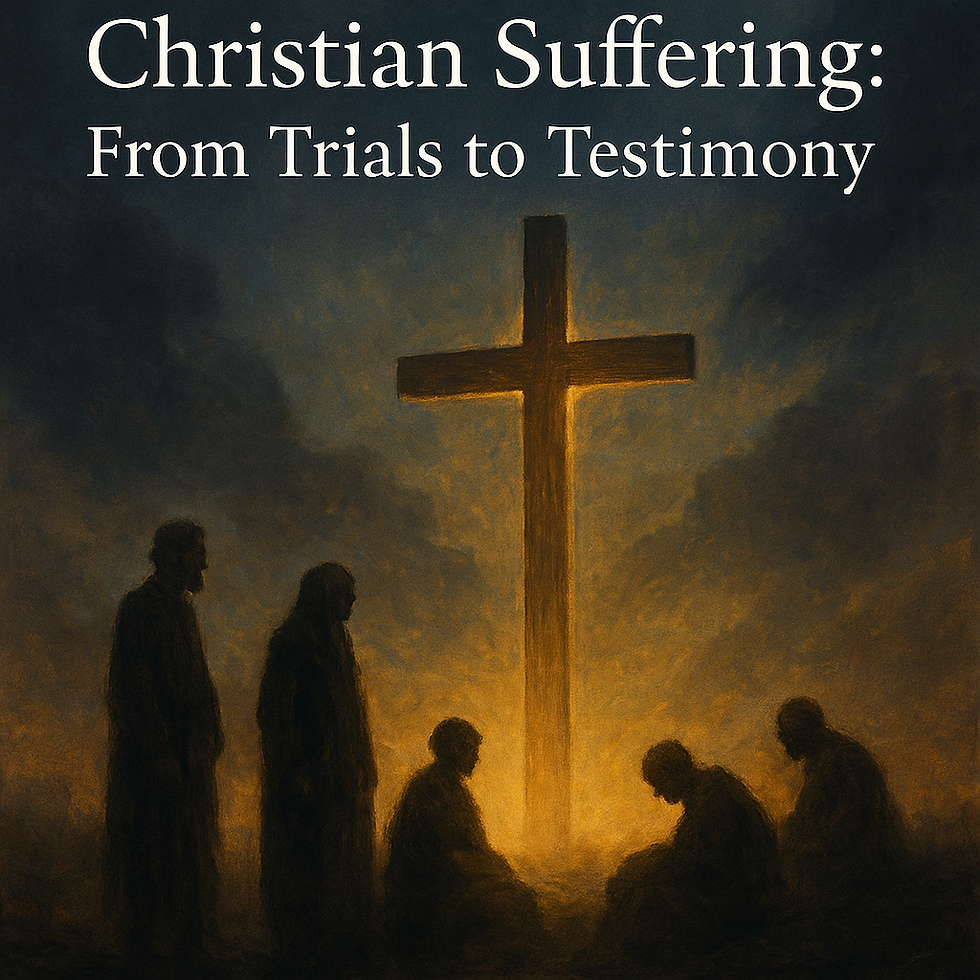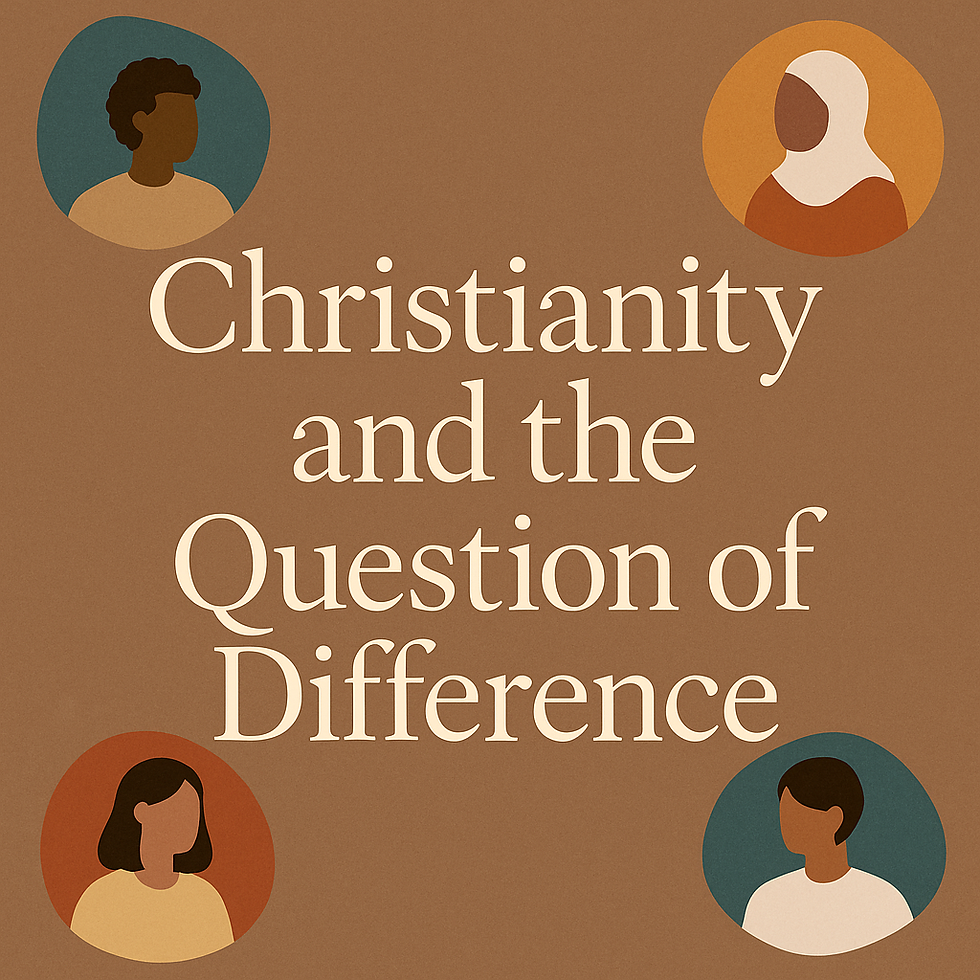Christian Suffering: From Trials to Testimony
- judith abraham
- Aug 19
- 2 min read

From its earliest days, Christianity has been marked by a paradox: the promise of eternal life paired with a present life of suffering. Unlike religions or philosophies that linked divine favor with prosperity and power, Christianity often defined itself as a community of sufferers. The Gospel of Mark portrays discipleship as leading to poverty, persecution, and even death. Paul, in his letters, goes so far as to boast in his sufferings, seeing them as participation in Christ’s death and resurrection. The writer of 1 Peter urges believers to see Jesus’s suffering as a model for their own endurance.
But why would people join such a movement?
Scholar Judith Perkins, in The Suffering Self, observes that Christianity reshaped social consciousness by giving categories like “the poor” and “the sick” visibility in ways Greco-Roman culture did not. Christians elevated these groups through care, almsgiving, and institutions such as hospitals. In doing so, they reframed suffering—not as meaningless misfortune or punishment, but as a mark of faith, even a form of strength. For early Christians, suffering carried spiritual meaning: it rejected worldly values of wealth and status, testified to devotion to God, and connected believers to Christ’s own passion.
The cross became the central symbol of this transformation. Jesus’s brutal execution by the Romans, far from being a shameful defeat, was remembered as the very source of salvation. To suffer for the faith was to walk in His footsteps.
Yet the story of suffering in Christianity is not simple. In the first centuries, persecution was usually local and sporadic, though it intensified under certain Roman emperors before Constantine’s conversion in the fourth century. Even so, martyrdom stories have deeply shaped Christian imagination. Accounts such as The Martyrs of Lyon or The Martyrdom of Perpetua and Felicitas praise believers who endured violence with courage and faith. Their witness became models of devotion for generations.
Still, not all Christians agreed. Writings like The Testimony of Truth, discovered at Nag Hammadi, questioned whether God truly desired the death of martyrs, arguing instead that salvation came through renouncing the world and following Christ’s teaching, not through persecution or death. These debates reveal that early Christians wrestled deeply with the meaning of suffering. Was it God’s will? A test? A path to salvation? Or a tragic distortion of faith?
Christian scripture itself offers many portraits of suffering: Job as the tested righteous one; Israel as called back to God through hardship; Jesus as the suffering servant whose death brings life. Revelation envisions eternal suffering for the unrepentant, while the Gospels show Jesus healing the sick and comforting the brokenhearted.
Across these varied voices, one theme endures: suffering is never meaningless. It is transformed—sometimes as a witness to faith, sometimes as a path to hope, and always as a reminder of Christ’s own suffering love.
In this, Christianity left a lasting legacy. By dignifying suffering, giving voice to the poor and sick, and lifting martyrdom as testimony, it reshaped not only religious life but also cultural and social imagination. For Christians then and now, suffering is not the end of the story—it is the soil from which faith, endurance, and hope take root.
-Author Judith Abraham



Comments